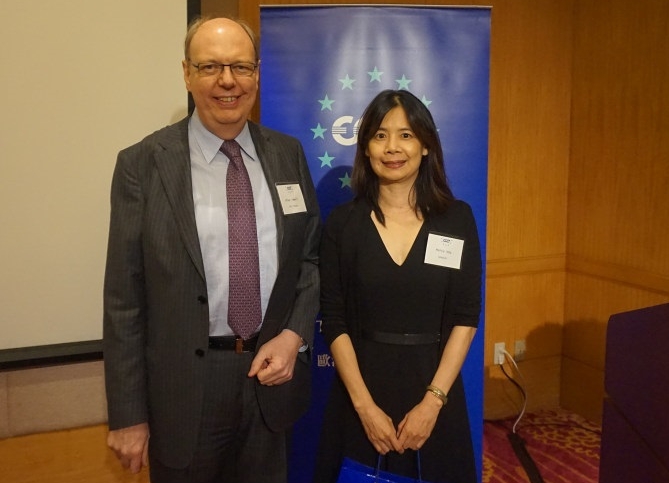Trends in Fast Moving Consumer Goods

The speaker highlighted some of the main findings of Kantar Worldpanel's 2015 Asian Brand Power report.
The company's research shows that the growth rate of spending on Fast Moving Consumer Goods (FMCG) in Asia has fallen from over 10% in 2013 to just 4.6% in 2015 and that the growth of Asian brands was twice as fast (8%) as it was for global brands (4%). She noted that the reason was not really a case of doing something wrong or not having a winning formula - she remarked that to succeed you need 10 winning formulas, not just one - but more a case of global firms being upstaged by their Asian rivals.
Kou went on to share some of the insights gained from interviews with successful CEOs from various Asian countries about what they had done to succeed, their ambitions as well as their major challenges. She singled out what she referred to as the five ‘power levers' driving the growth of the region's dominant players:
1. Masters of metamorphosis: Being able to adapt and change is crucial and something that is embraced by successful players.
2. Build the nation, build the brand: Purpose is power. Successful players decide on a role and work to get their brand identified with uplifting the community and countries they operate in. Another important component of success is to "democratize the market" by making products accessible and affordable. Kou showed videos of examples of companies that have succeeded in building reputable brands. In one example, an Indian company that produces hair care products used a television advert to link the company's promotion of one of its hair products to its CSR activities (supporting education). In the advert, the celebrity spokesperson with perfect hair (there were several close-ups of her hair in the advert) is teaching a classroom full of happy kids (who also have perfect hair).
Another company which produces cooking oil used an advert to promote the forum they had created to link mothers whose children are studying in other cities. The programme allows mothers to connect with their peers and exchange recipes, which the mothers then use to prepare meals for the children of their peers so that they are able to enjoy a taste of home away from home.
3. World-class innovation with a local twist: According to Kou, Asian companies tend to move much faster than their global peers and to favour smaller plans rather than massive campaigns. Moreover, multinationals tend to spend 80% of their budgets prior to launches, leaving little for post-launch support. According to Kou, there is a danger that competitors will simply copy these good ideas and offer cheaper prices, taking the wind out of the sails of large campaigns. Asian players are also much better at respecting heritage, reflecting national culture and aligning their brands with local values. Moreover, they are better at communicating these values in a way that appears authentic. While they embrace and respect culture and traditions, they are able to offer the best of both worlds by combining modern technology with tradition.
Companies also need to think of innovative ways to market their products. She cited the example of Chinese producer of tissue paper, which used their tissues to produce and showcase wedding dresses.
4. Digitise and humanise: While being tech-savvy is important, the use of technology has to appeal to and be easily accessible to ordinary people. Technology should be used creatively and is best wrapped in a story that is relatable and memorable. Kou stressed the importance of having young people who have grown up in the digital age in marketing teams. Many brands have been successful just by leveraging the power of celebrity endorsers on social media. It goes without saying that brands need to have a strong presence in all types of media but the form the presence takes should be suited to and tailored to the targeted audience. It does not have to be uniform across all platforms.
5. Data-led intuition: The most successful companies are those that know how to connect with their customers. Most people are inspired by a good story that tugs at the heart-strings. A good example of this is Taiwanese maker of instant noodles, which made a series of videos linking the flavours of its noodles with people's moods. People were touched by the stories of the characters' lives, which generated interest in the company's products.
Kou concluded with her presentation with her "Master Asian Brand Manifesto checklist":
- Be willing to change and adapt and not afraid to fail.
- Democratise your categories
- Purpose is power
- Help people modernize without abandoning the past.
- Innovate at lightning speed.
- Use digital for creatively-interactive communication.
- Study consumers to shed light on the future.
- An emotional wrapper is vital.
- Never compromise on quality.
- Invest in the future.
